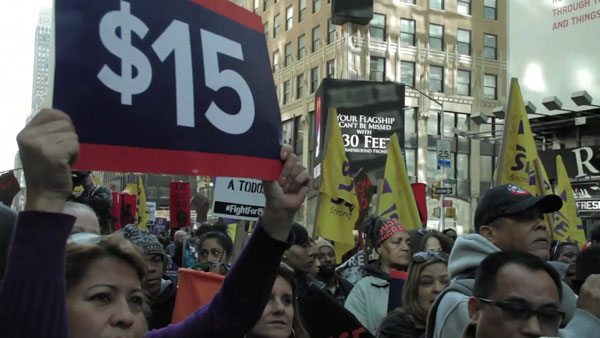
July 3rd, 2017; The New York Times and USA Today
States are passing new workers’ rights laws.
- Oregon just passed the country’s first state bill guaranteeing predictable work schedules (“with two weeks’ notice and 10 hours between shifts”).
- New Jersey recently doubled its paid family leave to 12 weeks, increased worker pay while on leave, and increased the circumstances allowable for paid family leave use.
- Last month, San Francisco expanded requirements for employers to provide breast feeding mothers with lactation rooms and breaks.
- Arizona now prohibits retaliation against workers seeking to exercise their rights; mandates that some unused sick time may be carried over to a new year; applies these same sick-leave rules to most workers, including temporary, seasonal, and part-time; and provides sick leave for a range of issues beyond illness.
- California, Oregon, Washington, Connecticut, Massachusetts, and Vermont passed paid sick leave laws in the last two years.
- Maryland, Illinois, and Rhode Island are currently considering paid sick leave laws.
In fact, according to a recent USA Today article, “Over the first half of 2017, more than 200 proposals addressing paid sick leave in some way have been introduced at state legislatures, including multiple bills in certain states.”
To date, the bills have mostly been passed in blue, or Democratic, states. Republicans have traditionally been opposed to these types of policies, claiming they are “onerous for business or expensive for government.” However, some of the recent bills have had Republican support. For example, Washington’s paid leave bill was sponsored by Republican state senator Joe Fain, and this weekend a new law from Georgia’s Republican-dominated Congress allowed workers to use sick days to care for immediate family members.
A recent study by the Pew Research Center found that “Americans largely support paid leave, and most supporters say employers, rather than the federal or state government, should cover the costs.” The study also found “a sharp income divide” in the way workers currently navigate paid leave situations. Middle-income (between $30,000 and $74,999) and higher-income ($75,000 and more) earners were more likely to have paid leave; 60 and 74 percent of workers in these brackets, respectively, had that benefit, while only 37 percent of lower-income workers (under $30,000) did. Forty-eight percent of this last group reported going on public assistance during their parental leave to cover lost wages or salary.
According to the Bureau of Labor Statistics, most families with children work. Sixty-one percent of married families have both parents working and 71 percent of women with underage children work. Advocates say family-friendly work policies are particularly important for low-income women, who, without paid leave, are most likely to leave the labor force after child birth or family illness.
A recent New York Times article on the bills wrote, “The flurry of policy making at the state level is a response to the void at the federal one, advocates and policy makers say.”
Sign up for our free newsletters
Subscribe to NPQ's newsletters to have our top stories delivered directly to your inbox.
By signing up, you agree to our privacy policy and terms of use, and to receive messages from NPQ and our partners.
The Trump administration was the first Republican administration to include a paid leave plan in its budget proposal, but it only covers new parents, for a maximum of six weeks, and with no clear financing source. Many advocates have found it wanting.
Cities are also passing workers’ rights laws. Several dozen have passed paid sick day laws, and six have passed predictable scheduling laws for on-call workers.
Over the last few years, family leave, paid sick leave, and the national overtime law have been passed to protect workers. In spite of the Trump’s administration’s attempts to “repeal and replace” Obamacare, one can see the healthcare law as part of this trend, as people often stay in or leave employment because of health insurance.
Aparna Mathur, a resident scholar at American Enterprise Institute, a right-leaning think tank, said, “Appetite for these policies only continues to grow, so as the federal government continues to drag its feet, more and more states and cities are stepping up.”
Though “states and cities have long been incubators for new policy ideas,” ultimately, advocates hope “state policies will pressure the federal government to take action,” the New York Times said.
Ellen Bravo, executive director of Family Values @ Work, said, “We see this as a way to get a federal bill.”
These laws create costs for the nonprofit sector, which many would gladly pay if they had money, but for many, the source of funding tends to be government contracts, which need to be adjusted to cover the cost of these new laws. This may not be addressed unless nonprofits explicitly advocate for that to happen. In the past, nonprofits have placed themselves in the position of opposing progressive workers’ rights measures because they have not prioritized workforce concerns. This is not only extraordinarily short-sighted, it is morally questionable, and therefore a problem when it comes to your brand as an organization.
If your nonprofit associations and collaboratives do not have these issues as priorities, push for them to get there. It’s well past time, and with many states and localities primed to move, this sector can push for the structural changes needed both at contracting and regulatory levels.—Cyndi Suarez











